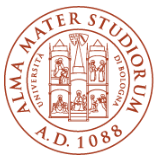Introduction
The University of Bologna is a world-class comprehensive university located in Bologna, Italy. It is widely recognized as the first university in the world with a complete university system and has developed to this day. It is known as the "Mother of World Universities" and is one of the four oldest famous universities in Europe, along with the University of Paris in France, the University of Oxford in the United Kingdom, and the University of Salamanca in Spain.
Overview
Number of students and faculty: There are about 90,291 students, including 47,253 undergraduates, 36,266 postgraduates, and 4,239 doctoral students; in terms of faculty, there are 2,917 academic staff and 2,965 administrative staff.
Campus distribution: There are 5 campuses in total. The main campus is located at 33 Zamboni Street in Bologna. Other campuses are located in Cesena, Forlì, Ravenna and Rimini. An overseas branch has also been established in Buenos Aires, Argentina.
History
The roots of the university can be traced back to 11 In Bologna in the 18th century, many scholars of grammar, rhetoric and logic gathered together to comment on the ancient Roman law code.
In 1158, Emperor Federico I issued a decree stipulating that universities were not affected by any power and enjoyed independence as research sites.
In 1364, the university established a seminary.
In 1888, the University of Bologna celebrated its 800th anniversary. Representatives from almost all universities in the world gathered in Bologna to cheer for the honor of the mother of universities.
On September 18, 1988, the presidents of 430 universities in Europe jointly signed the European University Charter in Bologna, officially declaring the University of Bologna the "mother of universities" in Europe.
Founded in 1088.
School Strength
Faculty: It has 2,917 academic staff, who have profound academic attainments and rich teaching experience in their respective fields.
Teaching Resources: The school has many advanced laboratories, audio-visual classrooms, clinical clinics, observatories and other teaching facilities, as well as rich library resources, including 38 Libraries with a total collection of 1.25 million books and 2,500 newspapers and periodicals.
Nature of the institution
Public research university.
Educational philosophy
Focus on cultivating students' critical thinking, innovation ability and social responsibility, emphasize the inheritance and innovation of knowledge, and strive to provide students with extensive and in-depth academic education so that they can play an important role in different fields and promote the development and progress of society.
Key laboratories and disciplines
Key laboratories: The school has scientific research platforms such as the Industrial Aerospace Interdepartmental Research Center, the Industrial Agricultural Products Research Interdepartmental Research Center, and the Construction Industry Research Interdepartmental Research Center.
Advantageous disciplines: Law, medicine, philosophy, economics, physics, astronomy, linguistics and other disciplines have important influence in Europe and even the world. Its medical major has cultivated many outstanding medical talents, and its law major has made important contributions to the development of the European legal system.
Faculty
The University of Bologna consists of 11 colleges and 33 departments, with a total of 215 bachelor's and master's degree programs, including 92 bachelor's programs, 110 master's programs, 13 direct master's programs, 49 international degree programs, and 45 PhD programs.
Ranking
Ranked 154th in the 2024 QS World University Rankings.
Ranked 122nd in the 2023 U.S. News World University Rankings and 161st in the 2023 Times Higher Education World University Rankings.
Expenses
The University of Bologna is a public university with relatively low tuition fees. The tuition fees for undergraduate and master's programs are around 1,000-3,000 euros per year, and the tuition fees for different majors may vary. In addition, the school also provides preferential policies such as scholarships and grants for outstanding students to reduce the financial burden of students.
Campus Environment
Architectural Style: The main campus is located in the center of Bologna. The campus has a variety of architectural styles, including historic teaching buildings and modern scientific research facilities, reflecting the fusion of tradition and modernity.
Learning and Living Facilities: The school has a well-stocked library, advanced laboratories, comfortable student dormitories, etc., providing students with good learning and living conditions. In addition, the campus is surrounded by convenient transportation and rich cultural activities, so students can fully enjoy the cultural and artistic resources of Bologna, a famous historical and cultural city.
-
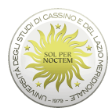
University of Cassino and Southern Lazio
-

University of Campania Luigi Vanvitelli
-
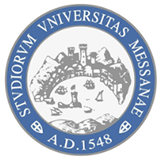
University of Messina
-
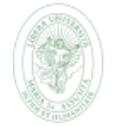
Libera Universita degli Studi Maria SS. Assunta di Roma (LUMSA)
-
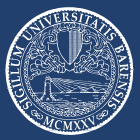
University of Bari Aldo Moro
-
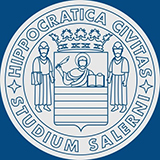
University of Salerno
-
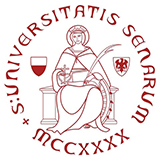
University of Siena
-
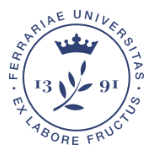
University of Ferrara
-
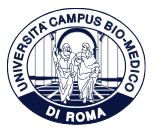
Campus Bio-Medico University of Rome
-

University of Genoa
-

Mesoamerican University
-

Istmo University
-

Mariano Galvez University of Guatemala
-

Regional University of Guatemala
-

Galileo University
-

Francisco Marroquín University
-

Rafael Landívar University
-

University of the Valley of Guatemala
-

University of San Carlos of Guatemala
-

Technological Institute of Tlaxcala Plateau
-

Golfo University
-

Technological University of South Sonora
-

Technological University of Huejotzingo
-

Tizimín Institute of Technology
-

Chilpancingo Institute of Technology

